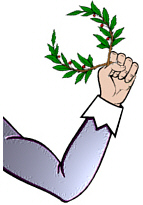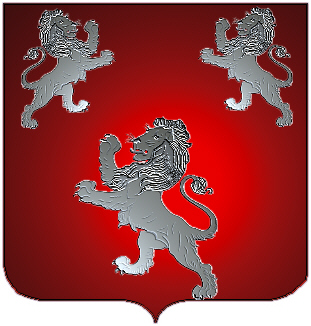Art by Betmatrho in
this Red-Thread Genealogy section for the
'Lost Tribes of Israel'
may
be freely used for personal use.
English Origins
Coat of Arms: Red with three silver lions rampant

Crest: A hand holding a garland of laurel
Motto: Spem successus alit
Motto Translated: Success nourishes hope
Coat of Arms: Red with three silver lions rampant

Crest: A hand holding a garland of laurel
Motto: Spem successus alit
Motto Translated: Success nourishes hope

Coat
of Arms: Red with three silver lions rampant
Crest: A hand holding a garland of laurel
Motto: Spem successus alit
Motto Translated: Success nourishes hope
Crest: A hand holding a garland of laurel
Motto: Spem successus alit
Motto Translated: Success nourishes hope
The gaelic word "ros" means a "headland" and is often used as part of place names in Scotland. There was an ancient Celtic earldom of Ross in the north-east of Scotland, in what is now the county of Ross and Cromarty, between the Cromarty and Dornoch Firths, north of Inverness. The clan was sometimes referred to as Clan Anrias or Gille Andras/Gillanders, the old Celtic Earls of Ross, who were said to have descended from Gillianrias, the son of the hereditary abbot at the monastery of Applecross.
In 1214, when Alexander II led an army to the north to repress a rebellion by Donald Bane, who was claiming the throne, Clan Ross assisted the king and was rewarded with the title Earl of Ross. The Rosses fought at the Battle of Largs against the Vikings in 1263.
The clan and their chief served with distinction in the Wars of Independence against the English. Their chief was captured at the Battle of Dunbar in 1296 and was taken as a prisoner to London. He was released but was captured again while protecting Robert the Bruce's wife and daughter at the shrine of St Duthac in Tain. The clan fought bravely at Battle of Bannockburn in 1314 and the earl's seal is one of those on the Declaration of Arbroath
in 1320. Hugh Ross married a sister of Robert the Bruce and fell at the Battle of Halidon Hill in 1333.
A Norman family called de Ros settled in south-west Scotland in the 11th century and some of their descendants also became known as "Ross" or sometimes "Rose". At one time they managed to convince the Lord Lyon that they were the chieftains of the clan Ross but this was overturned in 1903 and David Ross of Ross and Shandwick is the current chief.
The Ross motto is "Spem successus alit" - literaly, "Success nourishes hope", which nowadays we would call "Success breeds success".
After a long struggle with the neighbouring clan MacKays, the clan Ross was defeated at a battle at Strathcarron by the Mackays in 1486 and never recovered. Despite this, Ross is still one of the five most frequent names in the northern Highlands and the 16th most frequently registered in the whole of Scotland in 1995.
The Corbet, Dingwall, Duthie, Fair, Gillanders, Haggart, McLulich, MacTaggart, MacTear, MacTire, Taggart, Train, Vass and Wass families are all regarded as septs (sub-branches) of the powerful Clan Ross.
![The Red Thread Coat of Arms sample coat of arms [full]](http://the-red-thread.net/genealogy/bailey-stationary.jpeg)
Sample Coat of Arms - Full
http://genforum.genealogy.com/ross
